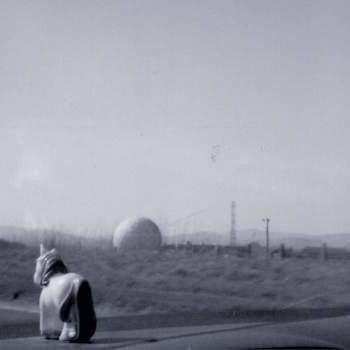It’s always interesting to see just how far out the so-called avant-garde can get, and one of the more challenging listens, in parts, of 2017 is Richard Youngs’ latest release on Fourth Dimension. The title is also apparently a Public Image Ltd reference in some manner, but as with many things Youngs, not one that’s immediately apparent from listening to the album.
What is evident is that, for the first disc at least, Youngs plans to keep his audience if not entertained, then thoroughly tested at the interface between sound as sound and listening as something offering more than instant gratification. In this case, much will depend on the individual’s tolerance (and that of their friends, families and companion animals) for ear-shredding tones and glitches. Many of the frequencies deployed here lie well beyond noise and manifest themselves somewhere in the realms of the sort of techniques used to extract information under duress more than resembling anything approaching music.
Which is fine, but listener beware is the name of the game, at least on pieces like ‘Constantinople’ where minimal layers of juddering repetition, unwholesome whooping and digital skree deal out an auditory kicking with the disinterested atonal relentlessness of a baling machine on too much ketamine. However, Youngs has also brought his friends, and the way that he mingles deracinated vocal perambulations with beautifully keening pipes and drones, courtesy of Alasdair Roberts and Donald WG Lindsay, on ‘Kinning Park’ and ‘Bridge Of Allan’ is nothing short of being both inspirational and deliquescently immersive. The words on ‘Airdrie’, perhaps Youngs’ own, are cut and pasted with a sense of hallucinatory bricolage that almost defies belief, and is at once reminiscent of the way that Holger Czukay and Rolf Dammers rearranged found radio vocals into ‘Boat Woman Song’ on Canaxis (a veritable touchstone for referencing keening, haunted studio vocal arrangements for nearly half a century now) and worth the price of admission alone.
The second disc is entirely dedicated to collaborative pieces, and as a consequence is even more diverse (though that might as well be Richard Youngs’ middle name). There are guitars, filtered through effects to be sure, but more recognisably still instruments playing melodies and tones, wayward and off-kilter as they may be. Youngs is joined by the likes of Neil Campbell and some very heavy bass murmurs are laid out with the help of old hand Simon Wickham-Smith on the languidly ominous closer ‘New Jersey’. There’s also some wobbly throat singing from Sybren Renema on ‘Genghis City’ matched with a jagged glitchscape of interrupted rhythmic snippets that tune in and out among the rolling, wordless drones with a delightful disregard for the proprieties of such combinations.
The tongue-twirling oddness is expanded upon with the aid of Alastair Galbraith, Reg Norris and Mick Elborado on ‘Otira Gorge’, a piece that shunts delicately imagined plangencies up against wibbling streams of febrile kazoo-like rippling, more horizontal-hold adjusting scrapes and continuous sounds. It’s a downright peculiar moment in an album bursting with such things, and one to be savoured. Then again, there’s the extra-special electronic melange of ‘Kitazawa’ to really push the transcendently odd boat out, all splutterings and rumblings, performed and (possibly) edited with all the concern for coherence and continuity of the average bull in a sampler shop, while remaining fully faithful to its own inherent form of illogic.
The average album from Richard Youngs – if there can even be said to be such a thing in existence – demands a certain willing disavowal of disbelief, a suspension of what to expect from music. Some parts of This Is Not A Lament are likely to have the listener reaching for the skip button more often than not, but these moments of extremity are not what makes it worthwhile. Youngs’ occasionally breathtaking disregard for convention, and the equally enthusiastic devotion to exploration with which he delivers some truly inspired sounds – and ways of hearing them – on This Is Not A Lament is quite often nothing short of remarkable.



